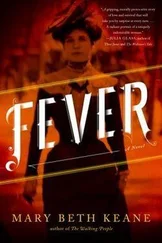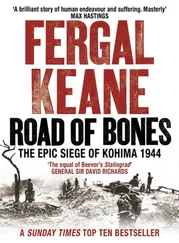Ursula Graham Bower lived in the Cachar Hills among terraced rice paddies whose surfaces glistened like signalling mirrors whenever the sun broke through the monsoon clouds. The area had recently experienced severe hunger, the consequence of decades of competition over land, and the destruction of the rice crop by grasshoppers. Graham Bower believed the area, which lay outside Charles Pawsey’s bailiwick, had been neglected and mismanaged by officials ‘not always of the best type’, men who regarded Cachar as merely a way station on the road to a better job. The government was not loved here; there was an awareness of neglect, and lingering bitterness over the suppression of the Gaidiliu rebellion, which would test Graham Bower’s political skills to the utmost. Colonel Rawdon Wright had told her to recruit from all the villages of the area. Recruit first, he said, and the guns and ammunition would follow. But then what? By now the stories of what the Japanese did to anybody they captured were well known. Death from a bullet would be a highly desirable outcome for a young woman caught with a weapon in the Naga Hills. A V Force patrol that had infiltrated back into Burma at the end of the previous May had been captured by the Japanese near the Chindwin river. An Indian officer had had his eyes gouged out before being killed, while two tribal scouts had been tied to a tree and executed.
Ursula Graham Bower would never have recruited her little army, or found the confidence to lead operations, without the help of Namkiabuing, a warrior of the Zemi Naga group, who became her bodyguard and assistant. She wrote of him in terms that rose above the contemporary European discourse of the ‘good native’. ‘He had an intense, a vivid sense of right and wrong. They were to him a personal responsibility. He could no more compromise with wrong than he could stop breathing.’ From the start Namkia made it clear that he was no pliant instrument of European rule. The two argued regularly and he submitted frequent resignations before returning to work. His granddaughter, Azwala, thought Namkia regarded Ursula more as a younger sister than as his employer: ‘He was very protective to her … because … they do not have a sister. So Ursula Graham Bower was a very beloved sister of the family.’
It was in the villages that Namkia proved his gift for debate. There were many in the area with bad memories of recruitment during the First World War, when labour battalions were raised for the Western Front. The men who returned brought back tales of horror. Graham Bower recorded a typical argument during one of her recruitment drives:
A Hangrum man [stood] up: ‘You’ll take us away! It’s a trap!’
Namkia [stood] up in an answer: ‘No! It’s an honest offer!’
‘Why should we fight for the Sahibs? We didn’t fight for the Kacharis, we didn’t fight for the Manipuris – why should we fight for the British?’
Namkia again: ‘Why shouldn’t we? Did the Kacharis or the Manipuris stop the Angamis raiding? Haven’t the Sahibs done that? Haven’t they given us roads and salt markets? Haven’t they given us protection and peace? Don’t we owe them something for that?’
And so it went on. Recruits were eventually offered but they were not warriors. Graham Bower noted that the village had offered up ‘the lame, the halt and blind’. Eventually, after she had sworn an oath that the men would not be taken away from the hills, the village relented and offered fitter specimens.
Next, the problem was to arm the recruits from the different villages. It was government policy to keep arms out of the hands of the Nagas and other tribes in order to stop them raiding each other or turning the weapons on the British. The arrival of the Japanese on the border removed this restraint. Graham Bower’s men were issued with guns, ninety ancient muzzle-loaders, which were probably as much a danger to themselves as to the Japanese. Still, they boosted the recruits’ self-esteem and their confidence in Graham Bower. They patrolled the hills with knowledge of the terrain and of concealment that no European could have matched. V Force headquarters gave orders that they were to avoid engagement with the enemy. Intelligence gathering was the priority.
A British soldier sent to learn jungle warfare skills with Graham Bower remembered her effect on both the Nagas and his British comrades. ‘When she spoke she had the most beautifully cultured voice and when she spoke we were captivated. Everyone of us said later that if she said “I want you to hang yourself by the neck from the nearest tree,” I am sure we would have done it. And these Nagas worshipped her.’
Closer to Kohima, Charles Pawsey had his own Naga intelligence network constantly bringing updates from the border area. In early September 1943 he received a message from a village reporting a suspicious-looking man claiming to be local but believed to be Japanese or Chinese. A fortnight later Pawsey was reporting to his deputy that ‘Japanese in great numbers had entered the hills … three villages have been bombed and burned for disobeying their orders and five people killed’. There were worrying reports, too, about some village chiefs offering their services as guides to the Japanese in return for gifts of salt. The Naga Hills were tense and expectant.
Perhaps because of wartime tension, the sense of the prevailing order being threatened, the hills experienced a brief revival of headhunting in late 1943. The Governor’s Fortnightly Report for the first half of December recorded that two villages had joined with a Burmese village in a major raid across the border. A second report to the Governor evoked the tense nature of affairs: ‘In the Naga Hills Tribal Area the powerful Konyak village of Sangnyu is reported to be threatening to interfere with the carriage of supplies for us by Zangkam who are their hereditary enemies.’
There were less threatening annoyances. Ursula Graham Bower was disturbed one morning by the arrival of an officer with a large retinue of porters. He had made his way to her post by claiming that he was a V Force officer. The lieutenant was in fact attached to an engineering unit and had been sent to look at the wreckage of a crashed American aircraft. Graham Bower was suspicious of the empty litter being carried by his men. When questioned, he told her it was for a sick subordinate. But the Nagas discovered that it had been used to carry the lieutenant through the hills, ‘making him the laughing stock of several villages in the process’. He told the Naga headman that because he was over forty he could not walk the difficult terrain. The headman was himself over sixty. It was an image of simpering weakness that could undermine the image of V Force among the local tribes. Remembering poor old Rawdon Wright and his brave progress across the hills, Graham Bower was furious and decided to teach the newcomer a lesson. ‘We had not been so bitter or angry for years,’ she wrote. Having learned that the lieutenant was also terrified of the ghosts that were reputed to stalk the hills, she arranged for two Nagas to terrorise him with fearful noises throughout the night. He left the following morning, whey-faced with exhaustion and fear.
Both Ursula Graham Bower and Charles Pawsey decided to stay on the wild frontier and take whatever the war might bring. Although as different in personality as it was possible to be – she the feisty extrovert, he the eternal reticent – they were driven by something more than duty to the empire. One could describe what they came to feel for the Nagas as loyalty, except that it was more intimate than that. By different paths they had come to love the Naga people and would stand or fall with them when the hurricane struck. It was a love that would be reciprocated at Kohima in courage and blood.
Читать дальше












